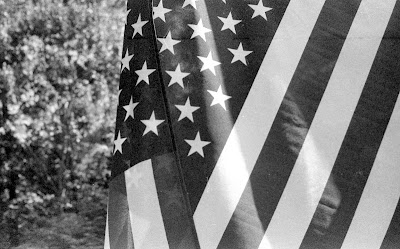Kodak's line of 35mm single-use "disposable" cameras began in 1988, and the branding of them as "Fun Saver" started in 1989. They featured a plastic body with a cardstock outer shell, and like the Fuji QuickSnap, were popular with consumers well into the digital age. They may have been inexpensive, but the production of cheap, yet sharp acrylic lenses combined with an f/11 aperture and 400 ISO film usually resulted in acceptable photos for the consumer. In the 1989, a cropped panorama (13x36mm negative image) model appeared, called the Kodak Stretch which featured a simple finder and 12 exposures. It was renamed the Kodak Fun Saver Panoramic 35, which was produced until 1999. The last iteration of the Fun Saver Panorama 35 featured 15 exposures, and a viewfinder that provided a relatively accurate view of the scene. Combined with a rectangular lens hood and a 25mm f/12 lens, the camera made acceptable color panoramic images of those vacation spots to countless tourists. They sold for about $12-$15 at the time. The fact that all of the images on the roll were the same format made it easier for photo labs to produce the panoramic prints. It wasn't until the appearance of the APS film format in 1996 that consumer-grade panoramic photos would once again become popular, even though they were based on an even smaller image area than the 13x36 of 35mm.
 |
| The first version was named "Stretch 35" |
 |
| Final version, late 1990s. |
I acquired a Fun Saver Panoramic 35 about 6 years ago and it sat on a shelf - I don't even recall whether I had removed the original film and processed it. After our move to NC it was in a box, and earlier this year I decided to open it up and reload it with Ilford XP-2 film.
While these cameras are reloadable, they are not like the Lomography Simple-Use camera or the Harman 35. They were meant to be reloaded in the factory, so you will need to disassemble the camera before you can reload it. The paper box covers over most of the workings of the camera, with access only for the shutter button, frame number, viewfinder, film advance, and lens. To remove it from the box, you need to remove the lens shade, which is held in place by two prongs. Once you remove the lens shade, the camera slides out of the cardstock box covering.
To open up the camera, look for an embossed label on the side and insert a small screwdriver a small screwdriver to pop the back open. You'll see that the film cassette is on the take-up side, and the supply side is an empty spool. You'll need to go into a darkroom or use a changing bag to roll film onto the supply spool and then place the two ends back into the body and close it up. It works better with hand reloads, because the film counter only goes to 15, and if you have a 24 exposure roll of film, it will not expose the remaining frames. I suggest either Ilford XP-2, Kentmere 400, Kodak Tri-X, or Fomapan 400.
You'll need to reset the frame counter by slightly lifting the clear top cover away and rotate the frame counter disk counter clockwise until 15 shows up in the raised window. You will not be able to take any photos without doing this. You should do this before you load the film into the camera.
Once those steps are done, reattach the back - it should snap into place without too much effort. You may want to super glue the lens hood in place because one of the prongs will have probably lost a tooth when you removed it.
Use some black paper tape to seal along the edges, just to avoid a light leak. Now you are ready to shoot with this fun little camera.
I did all these things before I found out about the wonderful panoramic images done with this camera by Deon Reynolds on The Darkroom web site. Reynolds adds a yellow filter to get more contrast with the sky when he uses a black and white film, such as Kodak Tri-X. Remove the pano mask and insert the gel filter right behind the lens and replace the mask. His images are really good, and will make you rethink what disposable cameras can do.
The following images were shot on expired Ilford XP-2, developed in D-76.
So, my first attempts with my reloaded Fun Saver Pano were pretty good. I shot mostly along the Blue Ridge Parkway near Asheville NC, with a few shots at the end of the roll from New Jersey. I have to say that I was impressed. The key thing here is that the Fun Saver Pano 35 has a 25mm f/12 lens, which is perfect for the format. You want a wide-angle in panoramic format, to get the most of the effect.
I picked up two more empty Fun Saver Panoramic 35's for $1 plus shipping on eBay, so now I have three to take on my next road trip.





















